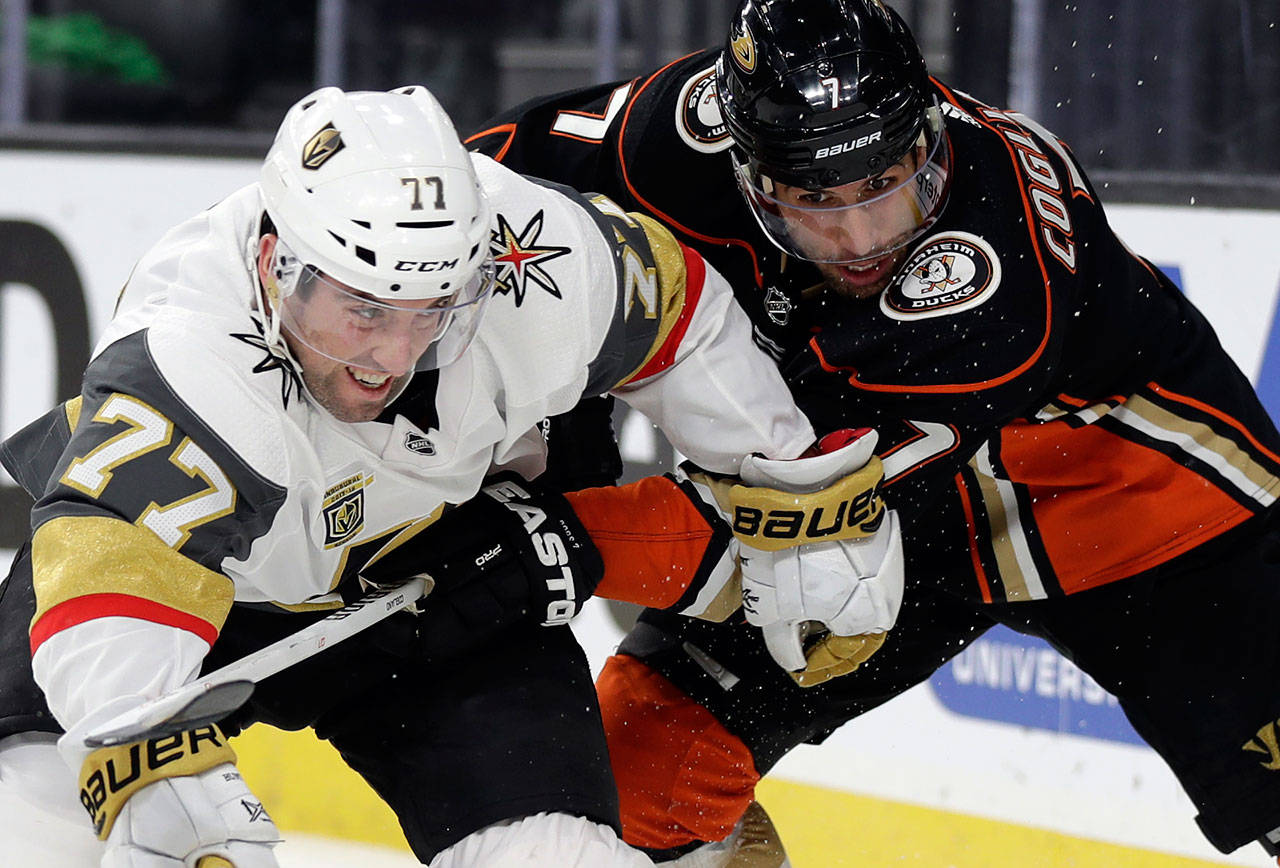Are there enough hockey fans in the Puget Sound region to bring an NHL franchise to Seattle?
My guess is yes, but it’s just that, a guess. A season-ticket drive for the Seattle Wannabees, to be launched March 1, will reveal numbers providing a more sophisticated judgment.
The season-ticket drive is similar to a major food or beverage company testing a new brand. Do you like the taste? Do you like the taste to the point you will go to the store and buy the new brand?
Absent the kind of national television contracts that keep the three other major pro sports leagues swimming in money, box-office revenues are the lifeblood of the NHL. The league wants assurance that hockey fans will flock to a renovated KeyArena 41 times a season.
Those touting Seattle’s viability as an NHL market will be asked to put their money where there mouth is. At $50 per game — a low-end estimation, but convenient for math — a season-ticket investment likely will require a down payment of $2,100. As season tickets generally are purchased in groups, that means $4,200 for a couple, and $8,400 for four, and you know where this is going.
It’s a steep investment on the premise of a hockey team, as opposed to the promise of a hockey team, but the investment will be refunded if the league concludes it has no relevance in Seattle. So there’s that.
Meanwhile, as the Winter Olympics dawdle into Day 24 of snowboarding, I’m getting the sense there’s little hockey buzz around here. Which is too bad, because the Olympics present an opportunity for any winter sport to convert casual observers into engaged fans.
Although the USA women’s team has done its best to salvage a disappointing overall performance by the Americans in South Korea, the men’s tournament is what generates TV viewers, and the men’s tournament has been a yawner.
It’s not a surprise, as the NHL disassociated itself with the 2018 Winter Olympics. The league’s decision was based on solid short-term reasoning. Shutting down for three weeks in the middle of the season, for a competition that puts its stars at risk, is foolhardy.
But the short-term benefits of keeping the schedule intact are mitigated by the long-term consequences of stunting hockey’s growth. It’s a beautiful game — soccer on ice, without players feigning gruesome injuries — but not a game easily understood by the uninitiated.
For kids without access to a frozen pond in Manitoba, it’s also an expensive game. Ice rinks are rare, which drives up the rental rate. Figuring equipment and insurance and traveling costs into the equation, organized hockey in the U.S. is enjoyed by a privileged few. (As is baseball, sadly, but that’s another story, for another day.)
And yet, despite the many difficulties in regenerating itself, hockey’s future is unlimited. Pace of play has become an issue in most sports — too many timeouts in football and basketball, too many late-inning calls to the bullpen in baseball — but there are no pace of play concerns in hockey. It’s full-steam, all out, lines seamlessly shifting in 90-second increments.
As a sportswriter, I have covered dozens of World Series and Super Bowls and NCAA Final Fours, as well as championship prizefights and major golf tournaments. Not saying I’ve seen it all, but OK, I’ve sort of seen it all.
My favorite memory?
The men’s hockey game between the U.S. and Canada at the 2010 Winter Olympics in Vancouver, B.C. A gold medal was at stake, the mood in the arena was fever-pitch crazy, and the best hockey players in the world extended the duel into overtime.
Although the Americans lost, American hockey won. A national television audience was introduced to the thrill of non-stop commotion created by athletes as agile and graceful as ballet dancers.
That classic showdown came 30 years after the 1980 U.S. men’s hockey team upset the USSR en route to establishing the gold standard for Americans in the Olympics, the “Miracle on Ice.”
I watched the Friday night shocker of the Soviets in a crowded bar where everybody knew your name and nobody knew the final score of the taped-delayed game — remember those days before social media? — and when it was over, I went to a pay phone to call my father, a Bay Area native who knew less about winter sports than I know about Sanskrit poetry.
“Did you hear, dad?” I asked. “Did you see it?”
Of course he had seen it. Whatever he said was obscured by the tone of his old-man voice, telling me everything he thought about hockey.
He was crying.
Talk to us
> Give us your news tips.
> Send us a letter to the editor.
> More Herald contact information.

























